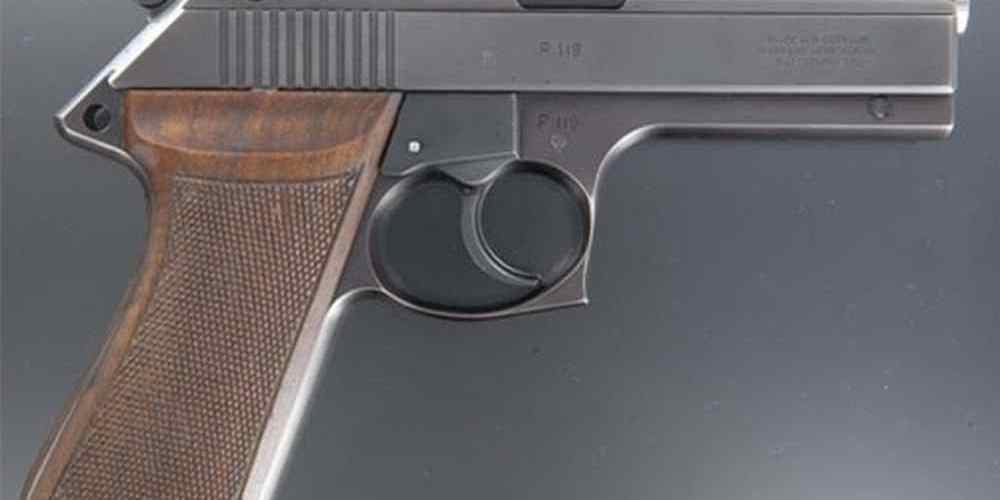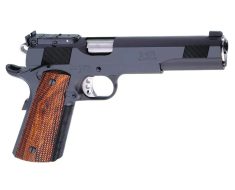“Stay calm, stay accurate with Stress Fire”
Strategies for Managing Stress During High-Pressure Situations
When it comes to mastering semi-auto pistol control under pressure, stress fire is a crucial skill to develop. In high-pressure situations, such as self-defense scenarios or competitive shooting matches, the ability to maintain control and accuracy with your pistol can mean the difference between success and failure. By understanding the effects of stress on your body and mind, and implementing strategies to manage that stress, you can improve your performance and increase your chances of success.
One of the key factors to consider when it comes to stress fire is the physiological response that occurs in high-pressure situations. When faced with a threat or a challenging task, your body goes into “fight or flight” mode, releasing adrenaline and other stress hormones that can impact your physical and mental abilities. These hormones can cause your heart rate to increase, your muscles to tense up, and your breathing to become shallow and rapid. All of these physical changes can affect your ability to control your pistol and make accurate shots.
To counteract the effects of stress on your shooting performance, it’s important to implement strategies to manage your stress levels. One effective technique is deep breathing, which can help to calm your mind and body and reduce the physical symptoms of stress. By taking slow, deep breaths and focusing on your breathing, you can lower your heart rate, relax your muscles, and improve your overall sense of control.
Another important strategy for managing stress during stress fire is mental rehearsal. By visualizing yourself in high-pressure situations and practicing your shooting skills in your mind, you can improve your confidence and mental focus when faced with a real-life scenario. By mentally rehearsing different scenarios and imagining yourself making accurate shots under pressure, you can build the mental resilience needed to perform well in stressful situations.
In addition to deep breathing and mental rehearsal, it’s also important to practice proper shooting techniques and drills to improve your pistol control under pressure. By mastering the fundamentals of shooting, such as grip, stance, sight alignment, and trigger control, you can build a solid foundation for accurate shooting in high-pressure situations. Regular practice and training can help to reinforce these skills and build muscle memory, so that you can perform effectively under stress.
When it comes to stress fire, it’s important to remember that stress is a natural response to challenging situations, and it’s something that everyone experiences at one time or another. By understanding the effects of stress on your body and mind, and implementing strategies to manage that stress, you can improve your shooting performance and increase your chances of success in high-pressure situations. By practicing deep breathing, mental rehearsal, and proper shooting techniques, you can build the skills and confidence needed to master semi-auto pistol control under pressure. With dedication and practice, you can become a more effective and confident shooter, even in the most stressful of situations.
The Importance of Proper Breathing Techniques for Pistol Control
When it comes to mastering semi-auto pistol control under pressure, one of the most important factors to consider is proper breathing techniques. The way you breathe can have a significant impact on your ability to maintain control and accuracy while shooting. In this article, we will explore the importance of proper breathing techniques for pistol control and provide some tips on how to improve your breathing skills.
Breathing is something that we do naturally without even thinking about it. However, when it comes to shooting a semi-auto pistol, proper breathing techniques can make a world of difference. The key to controlling your pistol effectively is to maintain a steady and controlled breathing pattern. This will help you stay calm and focused, even in high-pressure situations.

One of the most common mistakes that shooters make is holding their breath while shooting. This can lead to increased tension in the body, which can negatively impact your accuracy and control. Instead, focus on taking slow, deep breaths while shooting. This will help you stay relaxed and maintain control over your pistol.
Another important aspect of proper breathing techniques for pistol control is timing your breaths with your shots. As you exhale, squeeze the trigger gently to fire your shot. This will help you maintain a steady hand and improve your accuracy. Remember to take a moment to pause and reset your breathing before taking your next shot.
In addition to timing your breaths with your shots, it is also important to practice breathing exercises to improve your overall control and focus. One effective exercise is to practice deep breathing before and after shooting sessions. This will help you relax and clear your mind, allowing you to focus on your shooting technique.
It is also important to pay attention to your body’s natural rhythm while shooting. Some shooters find it helpful to exhale slowly as they squeeze the trigger, while others prefer to inhale before taking a shot. Experiment with different breathing techniques to find what works best for you.
In conclusion, proper breathing techniques are essential for mastering semi-auto pistol control under pressure. By maintaining a steady and controlled breathing pattern, you can stay calm and focused while shooting. Remember to take slow, deep breaths, time your breaths with your shots, and practice breathing exercises to improve your overall control and accuracy. With practice and dedication, you can become a more confident and accurate shooter.
Tips for Improving Focus and Concentration in Stressful Environments
Stress Fire: Mastering Semi-Auto Pistol Control Under Pressure
When it comes to shooting a semi-automatic pistol under pressure, maintaining control is key. Whether you’re in a high-stress situation or competing in a shooting competition, being able to focus and concentrate is essential for accuracy and success. In this article, we’ll explore some tips for improving your focus and concentration in stressful environments to help you master semi-auto pistol control under pressure.
One of the first things to consider when trying to improve your focus and concentration is your breathing. Deep, controlled breathing can help calm your nerves and center your mind. Before taking a shot, take a moment to inhale deeply through your nose and exhale slowly through your mouth. This simple technique can help you stay calm and focused, even in the most stressful situations.
Another important aspect of maintaining control under pressure is mental preparation. Visualizing success and positive outcomes can help boost your confidence and keep your mind focused on the task at hand. Before shooting, take a moment to visualize yourself hitting your target with precision and accuracy. This mental rehearsal can help you stay focused and confident when it matters most.
In addition to breathing and mental preparation, physical techniques can also help improve your focus and concentration. One technique that many shooters find helpful is the use of a focal point. By focusing on a specific point on your target, you can block out distractions and maintain your concentration on the task at hand. This can help improve your accuracy and control when shooting under pressure.
Another physical technique that can help improve your focus and concentration is the use of a shooting stance. A stable shooting stance can help you maintain control of your pistol and absorb recoil more effectively. Experiment with different stances to find one that works best for you and practice it regularly to improve your control and accuracy.
Finally, practice is key when it comes to mastering semi-auto pistol control under pressure. The more you practice shooting in stressful environments, the more comfortable and confident you will become. Set aside time each week to practice shooting drills and scenarios that simulate high-stress situations. This will help you build muscle memory and improve your ability to stay focused and in control when it matters most.
In conclusion, mastering semi-auto pistol control under pressure requires a combination of mental and physical techniques. By focusing on your breathing, mental preparation, and physical techniques such as using a focal point and shooting stance, you can improve your focus and concentration in stressful environments. Remember to practice regularly to build confidence and improve your control under pressure. With dedication and practice, you can become a master of semi-auto pistol control under pressure.
How to Develop Muscle Memory for Quick and Accurate Shooting
When it comes to shooting a semi-automatic pistol under pressure, developing muscle memory is crucial. Muscle memory is the ability of your muscles to perform a specific task without conscious effort. In the high-stress situation of a firefight, having well-developed muscle memory can mean the difference between life and death.
One of the best ways to develop muscle memory for shooting is through consistent practice. Repetition is key when it comes to training your muscles to perform a specific action automatically. By practicing regularly, you can train your muscles to remember the proper grip, stance, and trigger control needed for accurate shooting.
Another important aspect of developing muscle memory for shooting is proper technique. It’s essential to learn the correct way to hold and fire a pistol to ensure that your muscles are learning the right movements. Working with a qualified instructor can help you develop good habits and avoid developing bad ones that can be difficult to break later on.
In addition to practicing regularly and using proper technique, it’s also important to simulate high-stress situations during your training. By adding stressors such as time limits, distractions, or physical exertion to your practice sessions, you can better prepare your muscles to perform under pressure. This type of training can help you develop the mental and physical resilience needed to stay calm and focused in a real-life firefight.
One effective way to simulate stress during your training is to use a shot timer. A shot timer is a device that beeps at random intervals, signaling you to draw and fire your pistol as quickly as possible. By using a shot timer during your practice sessions, you can train your muscles to react quickly and accurately to unexpected stimuli, just like they would in a real-life firefight.
Another useful tool for developing muscle memory for shooting is dry fire practice. Dry fire practice involves practicing your shooting technique without live ammunition. By focusing on your grip, stance, and trigger control during dry fire practice, you can train your muscles to perform these actions automatically when you’re under pressure.
In conclusion, developing muscle memory for shooting a semi-automatic pistol under pressure is essential for mastering control in a firefight. By practicing regularly, using proper technique, and simulating high-stress situations during your training, you can train your muscles to react quickly and accurately when it matters most. Remember to work with a qualified instructor, use tools like shot timers, and incorporate dry fire practice into your training routine to maximize your muscle memory development. With dedication and hard work, you can become a master of semi-auto pistol control under pressure.
The Psychological Effects of Stress on Shooting Performance
When it comes to shooting a semi-automatic pistol under pressure, the psychological effects of stress can have a significant impact on your performance. Whether you are a law enforcement officer, a competitive shooter, or a civilian carrying for self-defense, understanding how stress can affect your shooting abilities is crucial for mastering pistol control in high-pressure situations.
One of the most common psychological effects of stress on shooting performance is the phenomenon known as “tunnel vision.” When under stress, our bodies go into a fight-or-flight response, which can cause our vision to narrow and focus solely on the threat in front of us. This tunnel vision can make it difficult to properly assess the situation, identify potential threats, and accurately aim your pistol.
In addition to tunnel vision, stress can also lead to a phenomenon known as “tachypsychia,” or time distortion. When under stress, our perception of time can become distorted, causing us to either perceive time as moving in slow motion or speeding up. This can make it challenging to make split-second decisions and accurately time your shots when firing a semi-automatic pistol.
Furthermore, stress can also impact our fine motor skills, making it harder to maintain proper grip, trigger control, and sight alignment when shooting a pistol. This can result in decreased accuracy and slower reaction times, both of which are critical for effectively engaging targets in high-pressure situations.
To combat the psychological effects of stress on shooting performance, it is essential to practice stress fire drills regularly. By simulating high-pressure scenarios in a controlled environment, you can train your mind and body to better handle stress and maintain proper pistol control under pressure.
One effective stress fire drill is the “stress inoculation” drill, where shooters are exposed to loud noises, flashing lights, and other stress-inducing stimuli while engaging targets with their semi-automatic pistols. This type of training can help desensitize shooters to the effects of stress and improve their ability to maintain focus and control in high-pressure situations.
Another useful stress fire drill is the “shoot-don’t shoot” scenario, where shooters are presented with targets that may or may not pose a threat. This type of drill can help improve decision-making skills under stress and teach shooters to quickly assess and engage potential threats while minimizing the risk of collateral damage.
In addition to stress fire drills, mental preparation is also crucial for mastering pistol control under pressure. Techniques such as visualization, deep breathing, and positive self-talk can help shooters stay calm and focused in high-stress situations, allowing them to maintain proper grip, trigger control, and sight alignment when firing their semi-automatic pistols.
By understanding the psychological effects of stress on shooting performance and implementing stress fire drills and mental preparation techniques into your training regimen, you can improve your ability to control a semi-automatic pistol under pressure. Remember, mastering pistol control is not just about physical skills – it’s also about mental resilience and the ability to stay calm and focused when it matters most.




